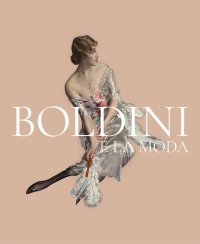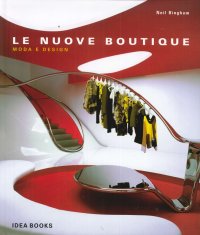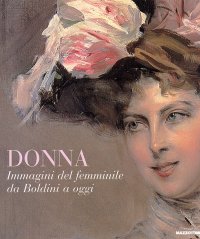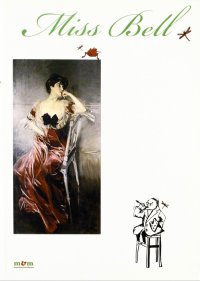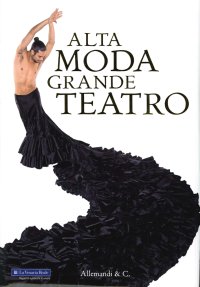Boldini e la Moda.
Ferrara, Palazzo dei Diamanti, 16 febbraio - 2 giugno 2019.
A cura di Barbara Guidi e Guidi B.
Traduzione di Archer M.
Contributi di Virginia Hill.
Ferrara, 2019; ril., pp. 296, ill. b/n e col., cm 24x28.
prezzo di copertina: € n.d.
|
Libri compresi nell'offerta:
Boldini e la Moda.
Ferrara, Palazzo dei Diamanti, 16 febbraio - 2 giugno 2019.
A cura di Barbara Guidi e Guidi B.
Traduzione di Archer M.
Contributi di Virginia Hill.
Ferrara, 2019; ril., pp. 296, ill. b/n e col., cm 24x28.
OMAGGIO (prezzo di copertina: € n.d.)
Le nuove boutique. Moda e design
Traduzione di Barcatta L.
Viareggio, 2005; ril., pp. 189, ill. col., tavv. col., cm 24,5x29.
OMAGGIO (prezzo di copertina: € 43.00)
Donna. Immagini del femminile da Boldini a oggi
Pescara, Museo d'Arte Moderna Vittoria Colonna, 20 ottobre 2005 - 23 gennaio 2006.
Milano, 2005; br., pp. 120, ill., cm 23x27.
(Biblioteca d'Arte).
OMAGGIO (prezzo di copertina: € 28.00)
Miss Bell. Un dipinto di Giovanni Boldini nel Museo delle raccolte Frugone di Genova
A cura di Giubilei M. F. e Maione S.
Illustrazioni di Scuderi L.
Montecatini Terme, 2007; br., pp. 40, ill., cm 15x21.
(Sogno Intorno all'Opera. 8).
OMAGGIO (prezzo di copertina: € 12.00)
Alta Moda, Grande Teatro
Torino, Venaria Reale, 29 marzo - 14 settembre 2014.
A cura di Capella M.
Torino, 2014; ril., pp. 184, ill. b/n e col., tavv., cm 17,5x25.
OMAGGIO (prezzo di copertina: € 22.00)
The Making of Hispano-Flemish Style. Art, Commerce, and Politics in Fifteenth-Century Castile
Kasl R.
Brepols Publishers
Testo Inglese.
Turnhout, 2014; cartonato, pp. 300, ill., cm 24x30.
(Me Fecit).
collana: Me Fecit
ISBN: 2-503-54624-2 - EAN13: 9782503546247
Soggetto: Pittura,Scultura
Periodo: 1400-1800 (XV-XVIII) Rinascimento
Testo in: 
Peso: 1.48 kg
The adoption of northern forms in Castile, first detected in the sculptural decoration of funerary chapels of the mid-1430s, was sustained for the rest of the century, culminating in the completion of the monastery of Miraflores under the patronage of Isabel of Castile. Chapter three outlines the religious, commemorative, and political motives that informed the foundation of the monastery by Juan II and those that animated his daughter's efforts to complete it. It establishes the chronology of works in relation to historical events and details the intervention of Juan and Simón de Colonia, Gil de Siloe, Juan de Flandes, and others. The reelaboration of Siloe's northern European sculptural idiom at Miraflores was a distinctive process, stimulated by the demands of his royal patron, conditioned by the practices of a heterogeneous workshop, and obliged to visualize a new concept of royal sovereignty.

Etica Coniugale. Per un Rinnovamento della Morale Matrimoniale
Il Cavalier Malosso. Un artista cremonese alla corte dei Farnese
Gli Eredi dei Macchiaioli. Da Silvestro Lega a Plinio Nomellini
La colonna sonora delle nostre vite. Canzoni di lotta del XX Secolo
Il restauro e la cura dell'albero. Mauro Civita tra vita e opere






